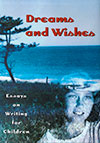 |
|
| I sometimes feel it necessary to remind people, vigorously, that children do not belong to a separate race; they are us, not yet wearing our heavy jacket of Time. ... Many things change as we grow up, some for the better and some for the worse, but a few do not, and one of them is the imagination. ... Age and education and experience can direct it and feed it, but they won’t alter its quality. They can however starve the imagination; they can even kill it. That’s why such a huge responsibility rests on the shoulders of parents, teachers, and children’s librarians, the keepers of the imaginative flame in an increasingly drafty world. |
|
| —from “Who Are the Children?” the Zena Sutherland Lecture for 1995 |
|
| Very young children, their conscious minds not yet developed, are all feeling and instinct. Closer to the unconscious than they will ever be again, they respond naturally to the archetypes and the deep echoes of fairy story, ritual, and myth. But after that, learning begins, as it must; the child is launched on his long quest for understanding. As he discovers the world around him, and the books that show him that world, his tastes in reading veer naturally toward realism. Some children not only reach that point but stay there ... But others, born with a different chemistry, go on seeking out fantasy all their lives, instinctively aware that so far from being babyish, it is probably the most complex form of fiction they will ever find. |
|
| —from “Escaping Into Ourselves,” an article for Celebrating Children’s |
|
| Books, edited by Betsy Hearne and Marilyn Kaye, 1981 |
|
| When Joseph Campbell talks about myth, he is talking about the tree of which fantasy is a branch—or more accurately, a whole cluster of branches. And his great complaint is that we live today in a demythologized world: a society without the guidelines of ritual ... He’s saying that artists have inherited the myth-making function of the shaman and the seer, and of course he’s right. Where the art of writing is concerned, his point applies most of all to the poets and the writers of fantasy. Both deal with images, and with their links to and within the unconscious mind. And the fantasist—not one of my favorite words—deals with the substance of myth: the deep archetypal patters of emotion and behavior which haunt us all whether we know it or not. |
|
| —From “Fantasy in the Real World,” the Anne Carroll Moore Lecture, 1988 |
|
|
Read more in Dreams and Wishes, Susan Cooper’s collection of essays and articles about writing for children. |
|
| ARTICLES AND INTERVIEWS FOR FURTHER READING |
|
| Video of “A Catch of the Breath,” lecture by Susan Cooper for the JRR Tolkien Society, April 2017 |
|
| “Susan Cooper: A Life in Writing” An interview with Charlotte Higgins, The Guardian, Dec 2012 |
|
| “Staying Power: Edwards Award winner Susan Cooper has been working her magic for more than 40 years,” by Anita Silvey, cover story for School Library Journal, June 2012 |
|
| “Lessons From a Literary Legend: Recalling the Work and Influence of Margaret K. McElderry” (New York Public Library, April 29, 2011) (Here is an audio of the memorial, with photos.) |
|
| Roundtable discussion with Susan Cooper, Gregory Maguire, and Roger Sutton for the Cambridge Forum, Nov 2007 |
|
| “Author Uncertain About ‘Dark’ Leap to Big Screen,” by Margot Adler, audio interview with Susan Cooper on All Things Considered, National Public Radio, Oct 2007 |
|
|
| Ebook of audio interview with Susan Cooper at Symphony Space for the Thalia Kids’ Book Club,
by Madeline Cohen (includes a reading from actor Daniel Gerroll), Oct 2007 |
|
| “Taliesin’s Successors: Interviews with Authors Of Modern Arthurian Literature,” interview by Raymond H. Thompson with Susan Cooper for The Camelot Project at the University of Rochester, July 1989 (** Correction: the Great Hall is based on Huntercomb Manor, not Dorney Court.) |
|
| See also the Something About the Author series (Gale Research) in your library. |
|
| BOOKS FOR FURTHER READING |
|
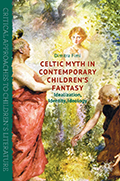 |
|
Celtic Myth in Contemporary Children's Fantasy
by Dimitra Fimi
(Palgrave Macmillan, 2017) |
|
|
|
“Some of the most successful texts of contemporary fantasy literature have turned to the 'Celtic' tradition, drawing inspiration from medieval Irish and Welsh mythological texts. This new book addresses a gap in scholarship by critically examining a number of works of contemporary (post-World-War-II) fantasy literature for children and young adults, that have adapted 'Celtic' myths, both Irish and Welsh.” |
|
|
|
|
|
|
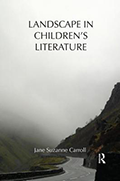 |
|
Landscape in Children’s Literature
by Jane Suzanne Carroll
(Routledge, 2012) |
|
|
|
“Using Susan Cooper's The Dark Is Rising Sequence as the test-case for this methodology, the book traces the development of the physical features and symbolic functions of landscape topoi from their earliest inception in medieval vernacular texts through to contemporary children's literature.” |
|
|
|
|
|
|
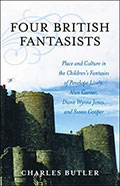 |
|
Four British Fantasists: Place and Culture in the Children’s Fantasies of Penelope Lively, Alan Garner, Diana Wynne Jones, and Susan Cooper
by Charles Butler
(Rowman & Littlefield, 2006) |
|
|
|
“Butler convincingly demolishes reductive, issues-oriented critics by explicating and celebrating the artistic choices made by these four masters of their craft.” |
|
|
|
—School Library Journal |
|
|
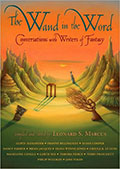 |
|
The Wand in the Word: Conversations with Writers of Fantasy
by Leonard Marcus
(Candlewick Press, 2006) |
|
|
|
“Wisdom, variety, and humor characterize these interviews full of incisive comments from thirteen fantasy writers. . . An unusual exposition of creativity and courage, this book offers a fascinating glimpse into the diverse ways imagination and fantasy work.” |
|
|
|
—Horn Book Fanfare, starred review |
|
|
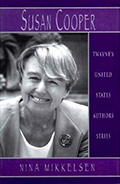 |
|
Susan Cooper
by Nina Mikkelsen
(Twayne Publishers, 1998) |
|



